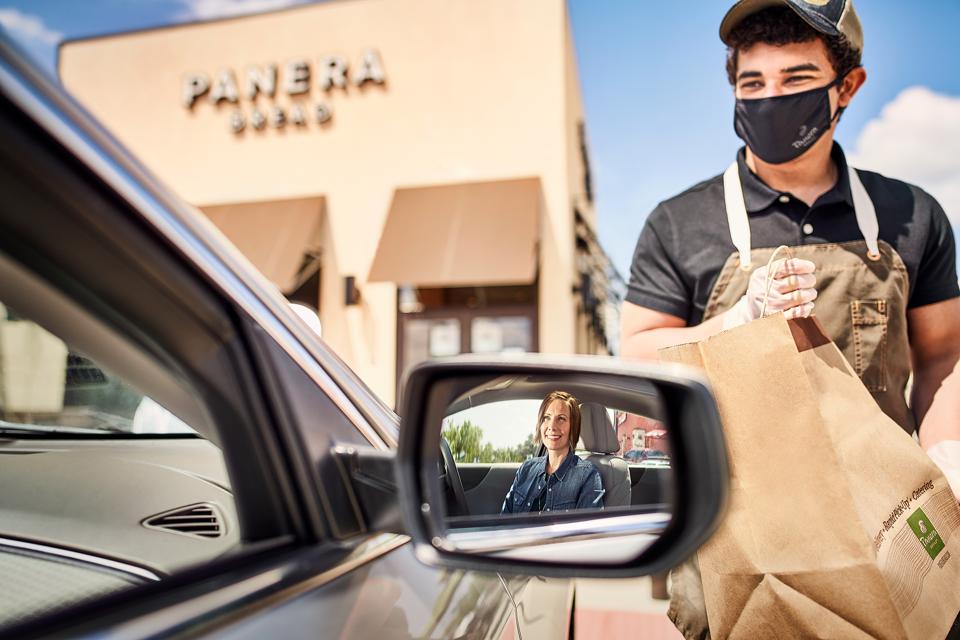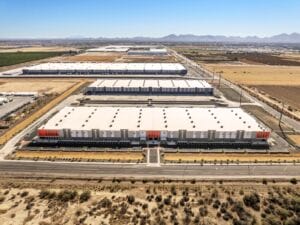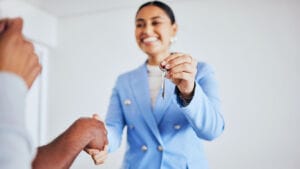Restaurants are in the midst of a huge learning curve forced upon them by COVID-19. Now more than ever, it is important for any restaurant to be able to offer a variety of solutions for customers to receive and place their orders. While this conversion was already on the drawing board for many operators prior to the pandemic, it has now become a critical situation that restaurants must incorporate into their business model. Or they could cease to operate if they cannot adapt. The top mission in today’s restaurant business now includes the ability for customers to order online, have options for enhanced phone orders, be offered convenient and safe pickup solutions, efficient drive-through lanes, and home delivery.
For restaurants that already had drive-through lanes they are adapting existing stores and changing new store design to include double or even triple drive-through lanes. For some they are providing pick-up only lanes for those who order online, encouraging customers to use their app with the reward of skipping the drive-through line and get their order faster. Many restaurants are sending staff to the waiting cars in the drive-through to take their order and shorten the time they are waiting. All of this provides speed for the customer and increases sales for the restaurant.

Chipotle is one restaurant that embraced the drive-through digital order pick-up lane even before the pandemic forced many traditional restaurants to close. Chipotle has now opened 100 stores that feature a Chipotlane. They experienced sales growth of over 80% year over year due to the increase in digital business. “Customers want convenience and appreciate the ability to personally retrieve their orders without leaving their car,” said Scott Boatwright, Chief Restaurant Officer. Undoubtedly many other restaurants will follow suit with enhanced digital ordering.
For traditional sit-down restaurants who previously considered carryout an afterthought, they are now providing most of their meals as takeout. By providing contactless curbside carryout and using store personnel to run the orders out to the cars, this eliminates the customer having to leave their vehicle. Some operators have converted their parking lots to temporary drive-through lanes. They have also streamlined their menu options for more efficiency. One of the more profound changes has been in telephone orders. While these traditional dine-in restaurants may have had one or two phone lines answered by a harried hostess or host, they now have shifted those phone orders to a dedicated system providing faster and more personalized service to the callers. As the sit-down restaurants evolve with their future store design, they will also advance their technology to include easy online ordering and apps for customers to place orders.
Design Modifications
For both fast food and full-service restaurants, the future store design will most likely include many building modifications the pandemic forced upon the restaurant industry. Some of these include, little or no lobby space, reduced dine-in space, exterior areas with food lockers for online orders or delivery personnel, less building square footage, external walk-up windows serving as an alternate place to order or retrieve carryout orders, and dedicated parking spaces for curbside delivery.
An emerging trend is that many fast food tenants are designing smaller concepts that eliminate the dining room and are drive-thru only. With no dining room these restaurants will be able to reduce their physical footprint and save on operating costs in their real estate, supplies and staffing. If the majority of customers are going through the drive-through or picking up curbside, the restaurants will also be able to save on sanitizing, trash, table clean up, drink refills and customer service staff to name a few.
Starbucks is an example of a restaurant who was forced to close indoor dining spaces in many of their stores. In response, they have accelerated the transformation of their physical and digital customer experience and are providing new options with Starbucks® Pickup locations. These have been added in dense markets including New York City, Chicago, Seattle and San Francisco. The stores provide a walk-up window for customers who pay ahead on the Starbucks® App. Prior to the COVID-19 crisis, approximately 80% of Starbucks U.S. transactions were on-the-go with customers using the Starbucks® App. Look for more restaurants adapting to this trend going forward.
What’s Ahead?
While it is not expected that the effects from COVID to be around forever, there are definite scars left in the restaurant industry. For those with outdated business models, such as buffets, many have already closed. Traditional fine dining restaurants will undoubtedly have a long road before they gain back their business. The next two years should bring many revelations and innovations in the restaurant sector.
One thing that is for certain is that cities and zoning policies will need to adapt to the increased need for drive-through restaurants and the changing dynamic of their retail sectors. Parcel sizes for some restaurants will increase in size to accommodate multiple drive-through lanes, and for some they may get smaller as the restaurants evolve to the pick-up only window. Consumers are driving this change and the cities need to work with the retailers to provide adequate opportunities for these newly designed stores, added car stacking and less parking spaces.
The drive-through restaurants that began in the 1950’s aren’t going away. They are becoming more important during the age of social distancing, and concerns for health and safety. With the emphasis on sanitization, cleaning every surface and constant hand washing, it is somewhat comforting to drive to a restaurant, pick up your order and bring it home to enjoy with your family. We think it will stay that way for quite some time.
Dave Cheatham is president on Velocity Retail Group, LLC.




